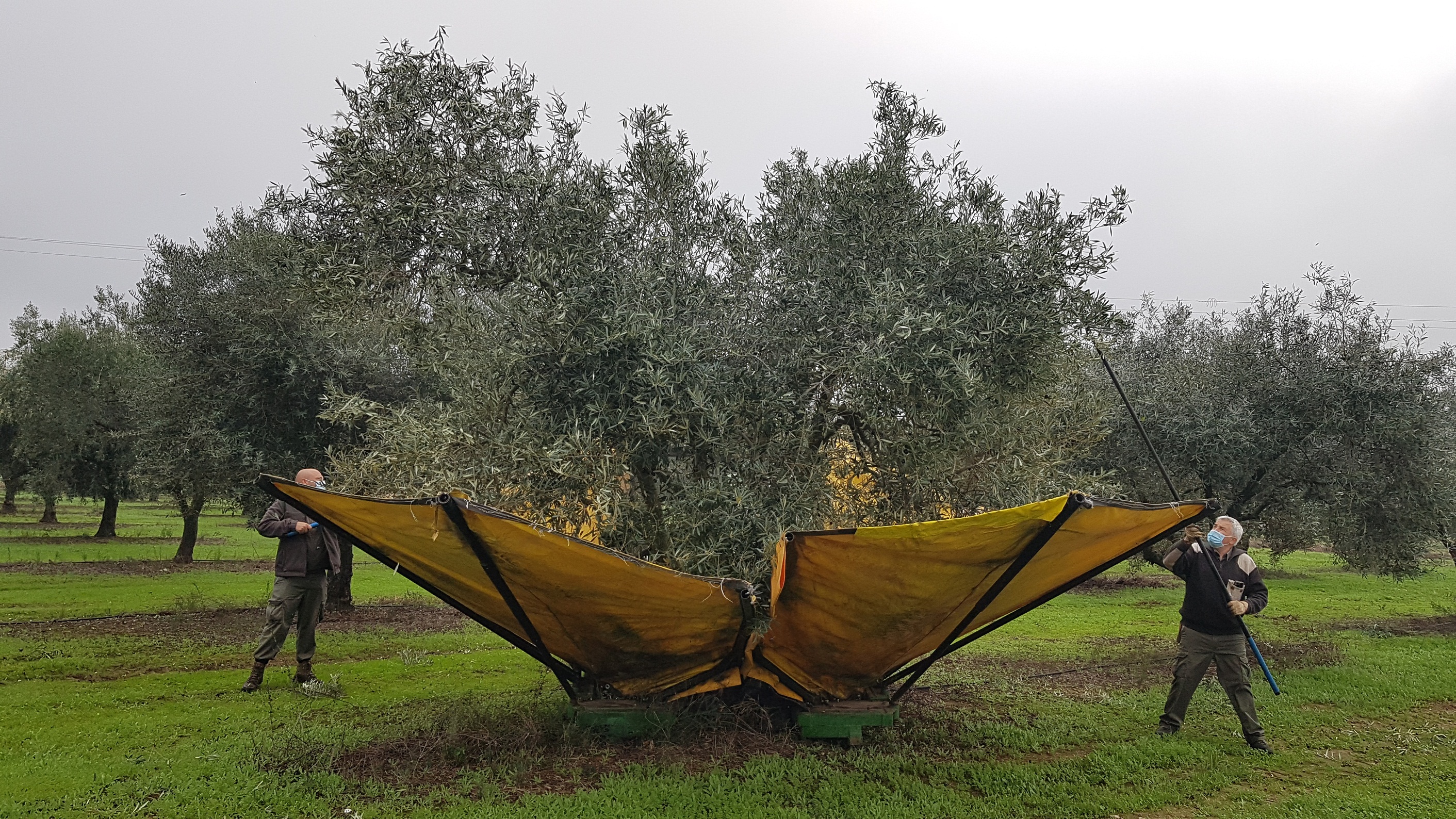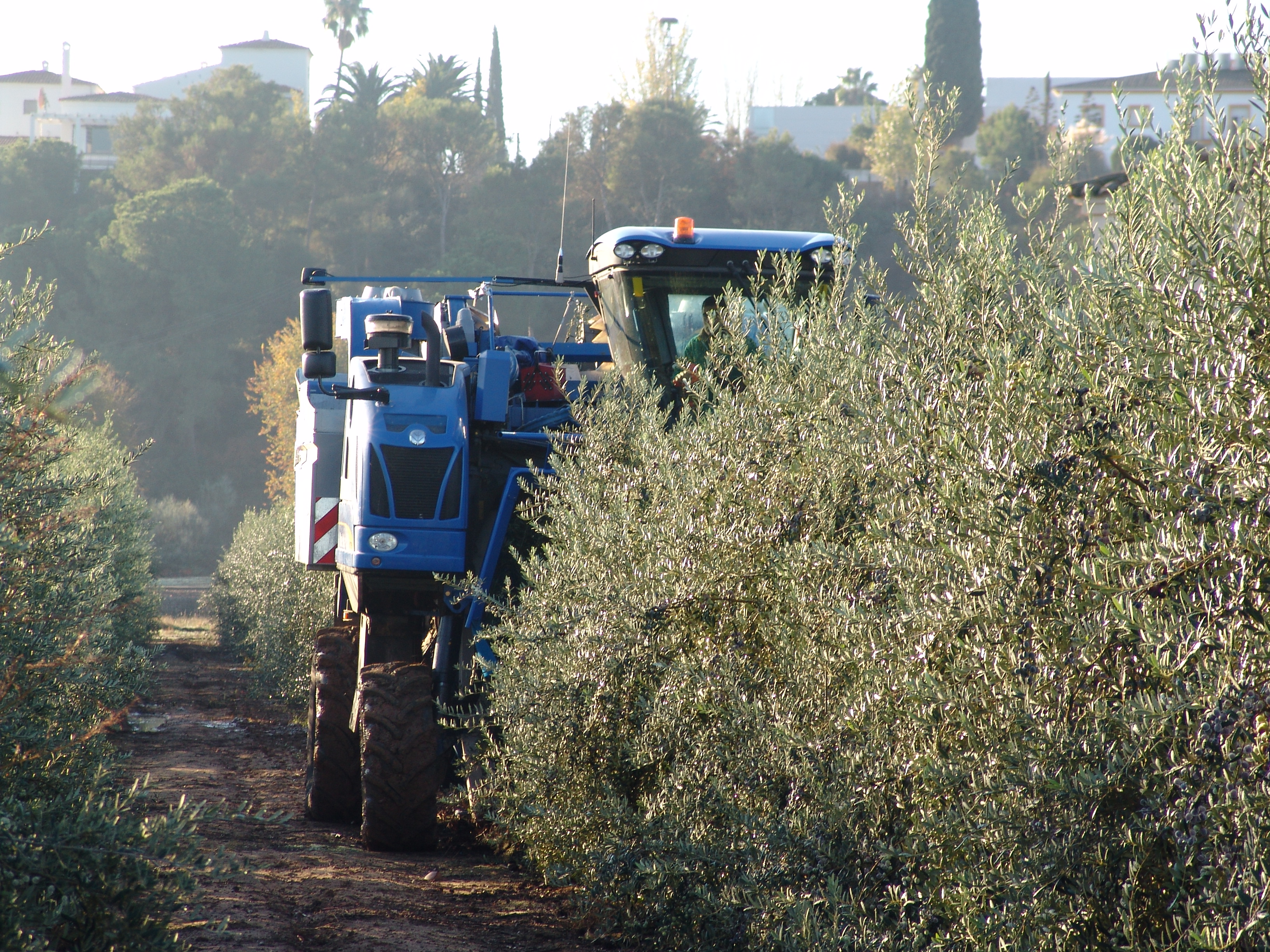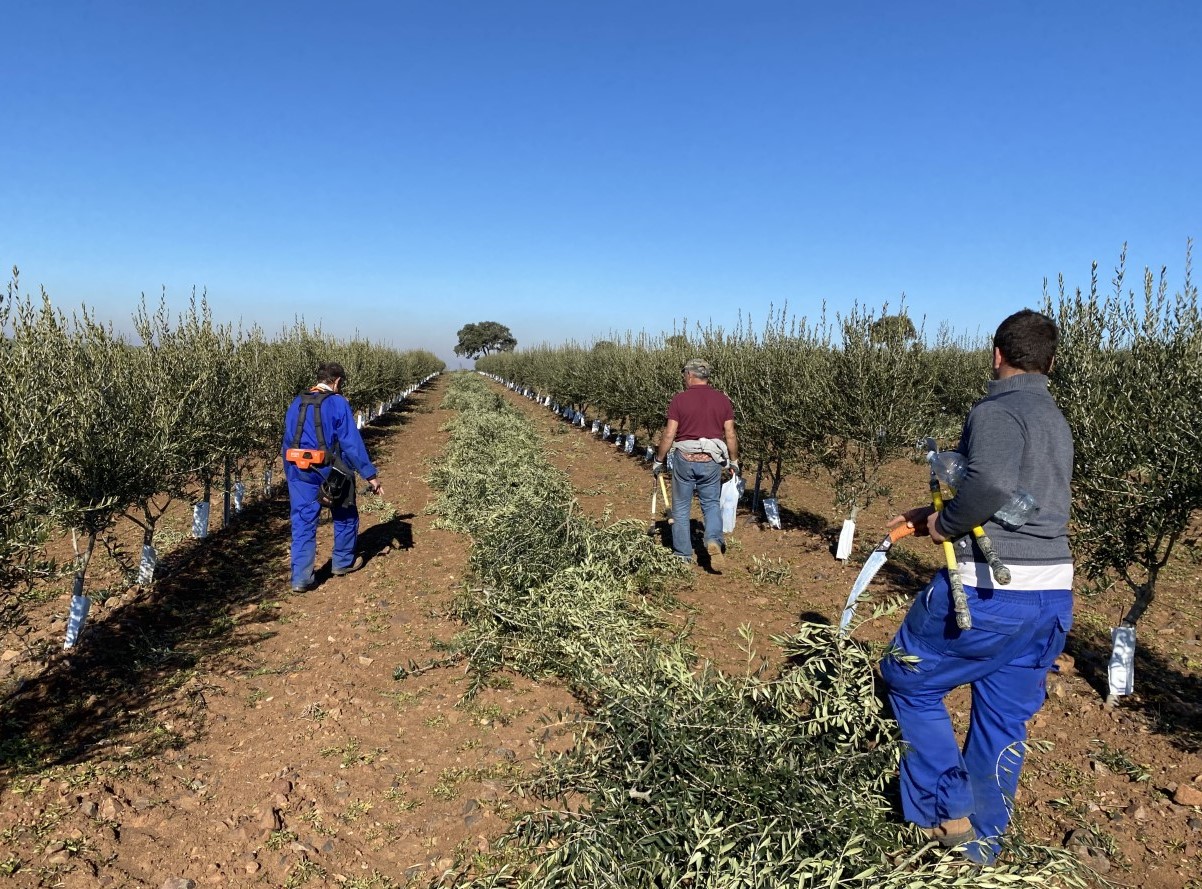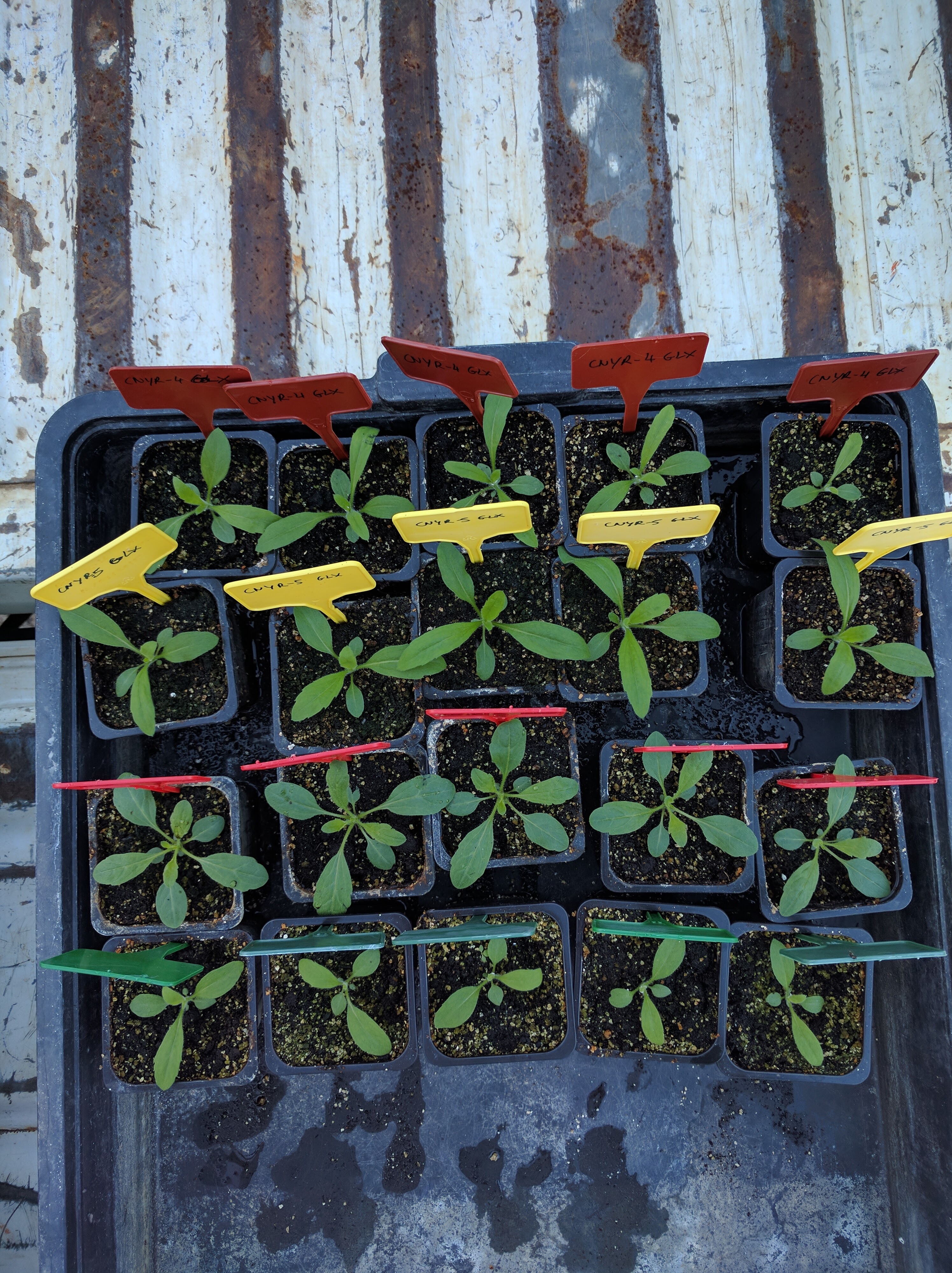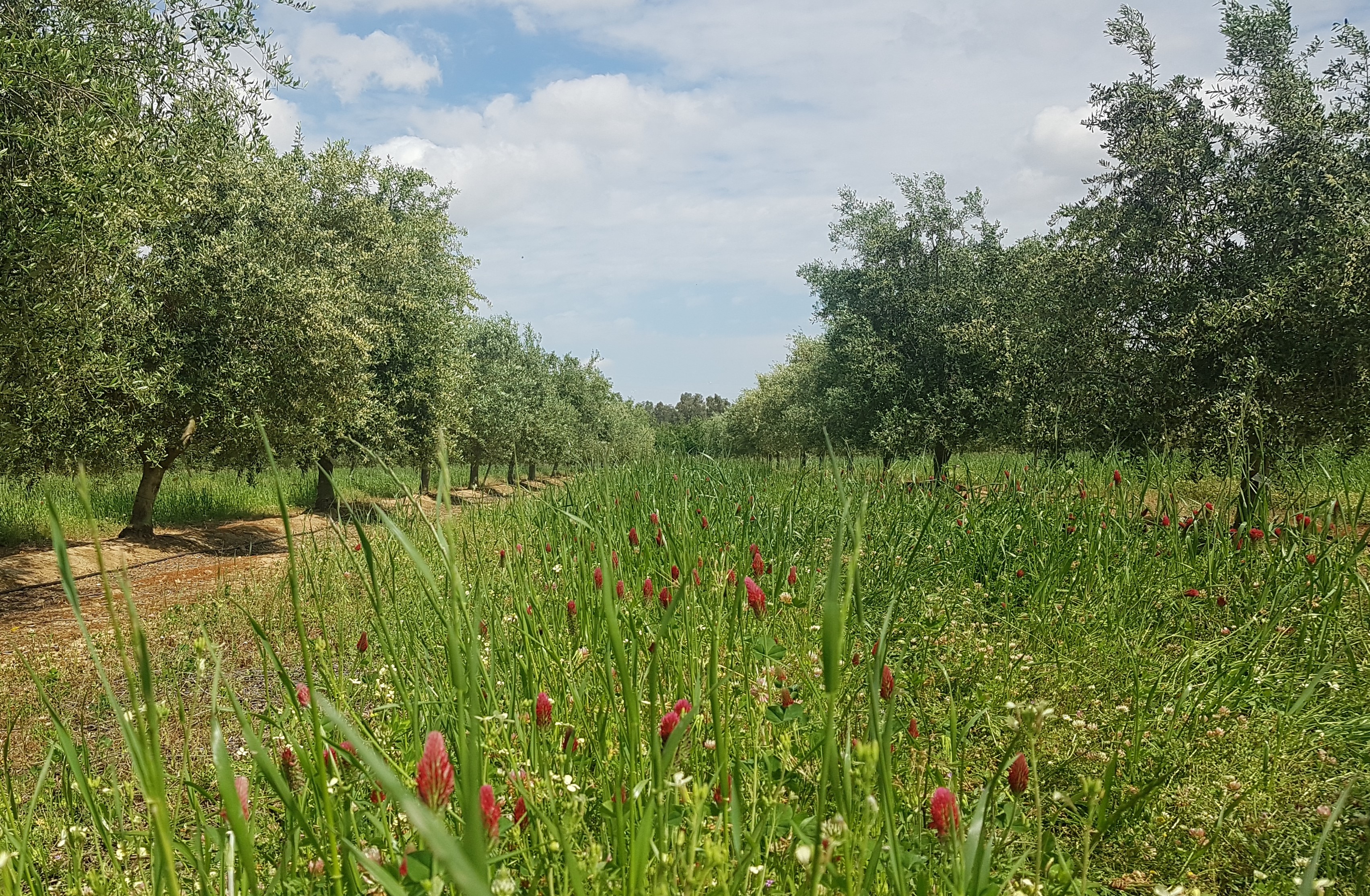
Olive tree
 General information
General information
The olive tree is the crop occupying the largest area of farmland of Extremadura with 287,207 hectares (ESYRCE, 2019). Although it used to be traditionally a rain fed crop, it currently occupies the first place of the irrigation crops in this region with 61,551 hectares. This is an unusual case in agriculture, where the introduction of new growing systems has not meant the replacement and reduction of the previous systems. In fact, at present, traditional olive groves cohabit with intensive and super-intensive olive groves or hedgerow groves.
 Olive growing systems: from the traditional olive grove to super-intensive groves
Olive growing systems: from the traditional olive grove to super-intensive groves
Traditional olive groves. Low plantation density (below 100 olive trees/ha), large trees and high costs (i.e. pruning and harvesting). In their majority they are rain fed crops with low productivity, although a small portion has been transformed into irrigation crop.
Highly-dense intensive olive groves. Plantations with 200 to 300 olive trees/ha (intensive olive grove) and 300 to 600 olive trees/ha (high density). Medium-size trees and mechanical harvesting techniques using both trunk vibrators and harvesting machines for intensive groves and high-density groves, respectively. Olive groves with irrigation systems which are, in their majority, very productive and profitable, reaching yields of approximately 2,000 kg/ha of oil.
Hedgerow or super-intensive groves. Densities above 1,500 olive trees/ha and small trees forming hedges. This type of olive grove is susceptible of full mechanisation of the harvest with harvesting machines and total or partial mechanisation of pruning, with yields reaching 2,000 kg/ha of oil. This system is carried out in irrigation groves and in recent years it has been introduced to rain fed groves too. There is one inconvenience, i.e. there are only a few species that adapt to this system.
 Growing requirements
Growing requirements
From a technical point of view, there are various issues preventing profitability and competitiveness in olive tree growing. On the one hand, rain fed olive groves have very low yields and high growing costs, which leads to extreme situations of non-profitability. The agricultural practices applied to this type of olive grove need to be reviewed, the possibilities of mechanisation of the processes need to be assessed and the use of singular varieties provided with a designation of origin -thus making the olive grove a sustainable resource- needs to be promoted. Another future line of work is the promotion of the value of the potential benefits that these olive groves have for the environment as biodiversity reservoirs and sinks for greenhouse gases.
In intensive olive groves and hedgerow olive groves the focus is on the growing practices employed to adjust the costs and optimise production from the quantitative and qualitative point of view, as well as extend the useful life of plantations. These lines of work include, amongst other practices, the design of plantations, the selection of plant materials, pruning, then efficient management of water and fertilisers and the use of advance farming precision technologies. Economic and environmental sustainability are two basic pillars in all of them.
 Lines of Research
Lines of Research
The work on olive growing begun in CICYTEX in 1998 with the shift from the traditional olive grove growing system to irrigation and intensive plantation systems; later on, tests were performed in super-intensive olive groves and collections of plant material were built. All these medium and long-term tests have provided solid results for water requirements, irrigation strategies and pruning practices in various production systems, as well as information on the adaptation of several varieties to the intensive and super-intensive systems.
Pollen quality projects have also been conducted to ascertain the feasibility and germinability of the Spanish and Portuguese varieties and weed control in olive groves, by conducting herbicide effectiveness tests, as well as confirming resistance level of mainly Conyza spp. and Lolium spp. and the use of ground cover plants. In the last five years a greater effort has been made to apply the results of research to commercial farms using agricultural precision techniques in order to characterise the plots spatially. Sensorisation has also been introduced to help the decision-making processes and fully-automated irrigation systems have been implemented.
In all agronomic tests, the relationship between agronomic practices, agro-ecological conditions and plant material has been studied in relation to their influence on the improvement and quality of the production. Additionally, there is an area of work in CICYTEX that focuses on this industry sector, both table olives and oil-producing olives.




